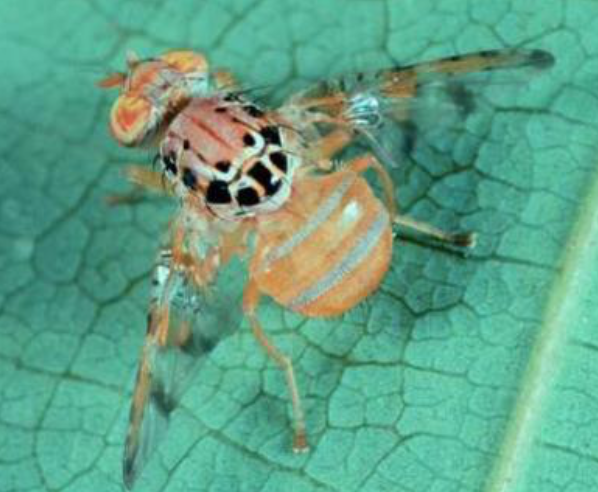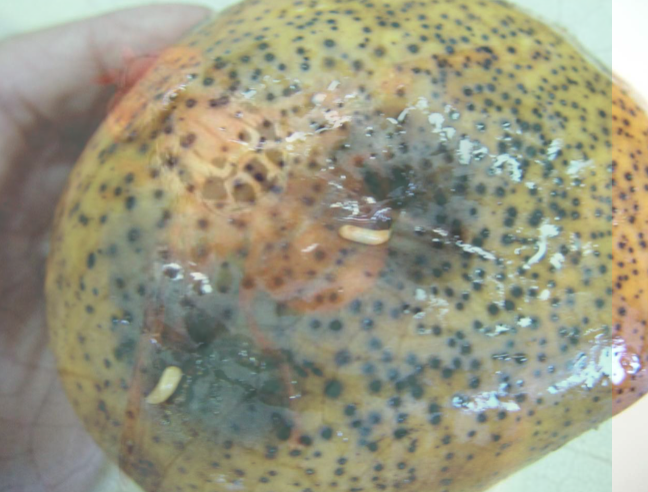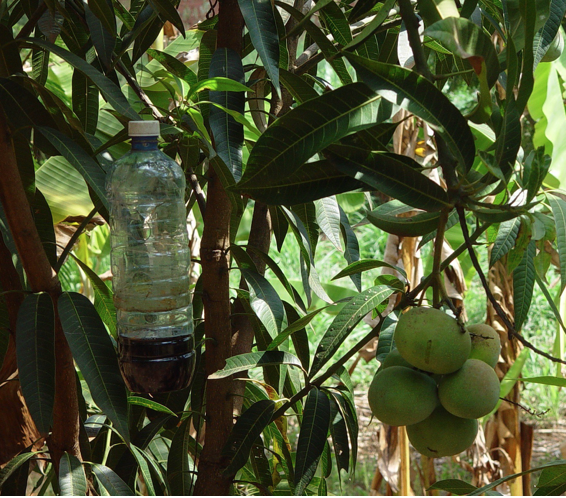Credit: Biovision-Infonet

(c) R.C. Copeland, icipe

(c) A. M. Varela, icipe.
Fruit flies lay eggs under the skin of mature green and ripening fruit. Some fruit flies such as Bactrocera invadens, a new species recently introduced into East Africa, also lay eggs on small fruit. The eggs hatch into whitish maggots within 1 to 2 days. The maggots feed on the fruit flesh and the fruit starts to rot. After 4 to 17 days, the maggots leave the fruit, making holes in the skin.
Adult fruit flies are about 4-7 mm long.
What to do:
- Collect and destroy all fallen fruits at least twice a week during the fruit season.
- Do not put collected damaged fruits into compost heaps. Instead, burn them or bury them at least 50 cm deep, so that the fruit flies cannot reach the soil surface.
- Remove fruits with dimples and those that ooze clear sap. This method is more laborious than picking the rotten fruits from the ground, but it is also more effective.
- Whenever possible, wrap fruit in newspaper or paper bags to prevent fruit flies from laying eggs on the fruit. This has to be done well before the fruit matures.
- Pick overripe fruits, as they attract fruit flies.
- Physical methods include fruit fly traps and fruit bagging

The trap can be made with plastic bottle with 4 holes evenly spaced on its sides (so that fruit flies are trapped), a lid, a wire hanger. The trap is filled with bait (vinegar and soap or peace of banana) and hanged on the tree about 2-4 m above the ground within the canopy layer, in a semi-shaded spots, preferably in the upwind part of the canopy. The trap should be hanged in such a manner that branches and leaves are nearby, but not touching the trap. Traps should be hanged 10 – 50 m apart, depending on the bait used. Collect catches weekly and sieve them.
See more on Fruit Flies My Course>Insects>Pests